
|
Vol 69 |
Page 11 |
Privacy Policy | Editorial Policy | Profit Policy | Join the Association | List of Members | Contact us | Index | Links
Back Go to page: 1 2 3 4 5 6 7 8 9 10 11 12 13 14 15 16 17 18 19 20 Forward
Veterans and Veterans Families Counselling Service (VVCS) can be reached 24 hours a day across Australia
for crisis support and free and confidential counseling. Phone 1800 011 046.
VVCS is a service founded by Vietnam Veterans.
Contents.
7 things to eat or avoid to lower blood pressure.
Compare Health Insurance Policies.
The biggest lies the food industry tells consumers.
Compare Health Insurance Policies.
There are many organisations offering to show you the best Health Insurer to suit your needs, but a lot of them are affiliated with one or more Insurer, all receive a commission if they steer you to a particular Insurer and the higher the cover they get you to take out, the more commission the receive. SO! You should be very careful when using them.

At the moment, there are 37 different Health Funds in Australia and many sites, such as iSelect, Compare the Market, Choosi, Canstar, Finder and Compare Insurance, etc, all offering to steer you to the “correct” one for your needs. You would be well advised to leave all these alone. Click HERE to see what Choice says of them.
There has been some reform in the legislation governing Health Insurance and today it is a little easier to make an informed decision. Policies are now sorted into Gold, Silver, Bronze and Basic categories, Each category has a set of minimum standards which that category must offer to be eligible for inclusion in that tier, however, Insurers can offer additional levels of cover within each category.
Click HERE to see the minimum offer under each category.
So, what do you do? Luckily the Federal Government also has a site which you can visit to find the right Insurer for you. This site asks you a heap of questions to find your exact need, (for instance people our age do not need maternity cover), then once it has all the information it needs it will display a table with a number of suggested Insurers.
You can visit that site HERE.
I can’t believe how old people my age are.
7 things to eat or avoid to lower your blood pressure.
High blood pressure is called the silent killer. That's because it has no symptoms. Having high blood pressure (hypertension) increases your risk of heart disease, stroke, heart failure and kidney disease.
There is some good news. High blood pressure can be treated or prevented. Eating oats, fruit and vegetables and beetroot, in particular helps, so does avoiding salt, liquorice, caffeine and alcohol.
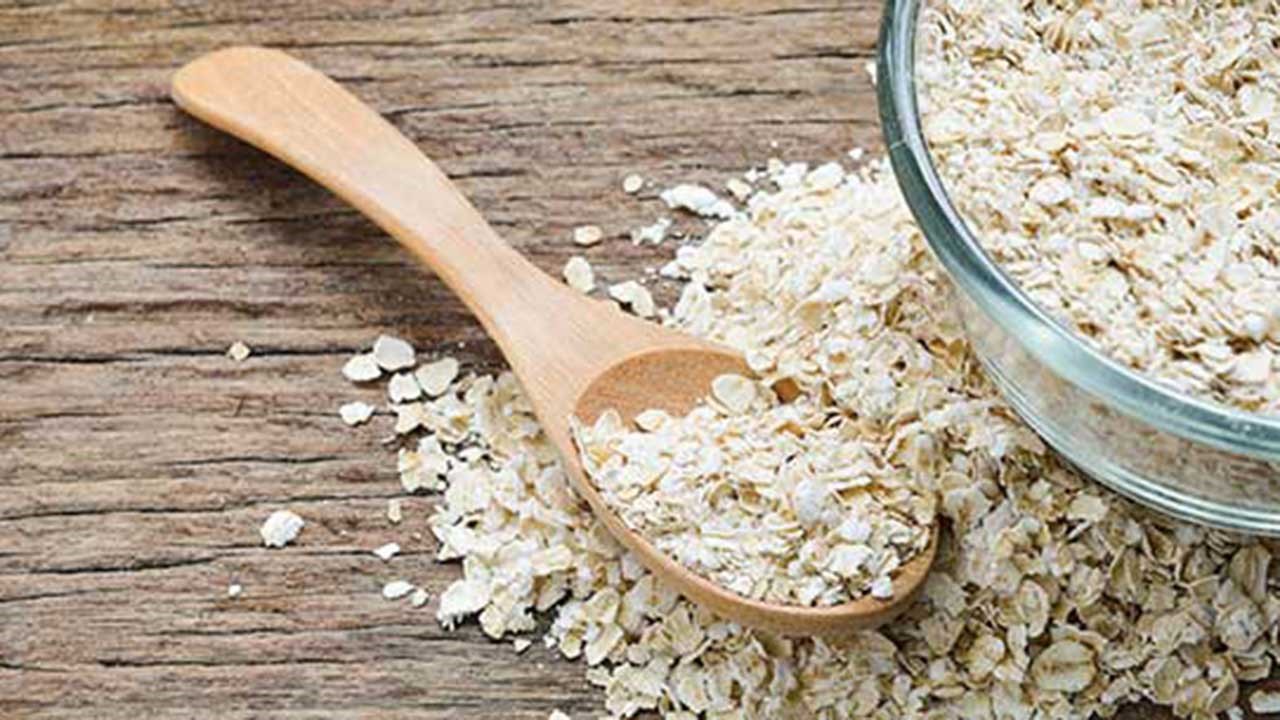
Optimal blood pressure is 120 mmHg or less over 80 mmHg or less. Lowering it by 1-2 mmHg can have a big impact on reducing your risk of heart disease and stroke, and the nation's health care costs.
What to eat to lower your blood pressure.
Rolled oats.
A review with five research trials included tested the impact of oats on systolic blood pressure (the first blood pressure number, which is the pressure at which the heart pumps blood) and diastolic blood pressure (the second number, which is when the heart relaxes) in about 400 healthy adults. The researchers found that systolic blood pressure was 2.7 mmHg lower and diastolic blood pressure was 1.5 mmHg lower when participants ate around 60 grams of rolled oats (a packed half-cup raw oats) or 25 grams of oat bran per day.
This quantity of oats or oat bran contains around four grams of a type of fibre called beta-glucan. For each extra one gram of total daily fibre, there was an extra 0.11 mmHg reduction in diastolic blood pressure. The recommended minimum daily adult fibre intakes are 30 grams for men and 25 grams for women. While some of fibre's effect is due to weight loss, soluble fibres produce bioactive products when they're fermented in the large bowel. These work directly to lower blood pressure.
To improve your blood pressure, eat rolled oats or oat bran for breakfast, add to meat patties, or mix with breadcrumbs in recipes that call for crumbing.
Beetroot.
Beetroot is extremely rich in a compound called inorganic nitrate. During digestion, this gets converted into nitric oxide, which causes arteries to dilate. This directly lowers the pressure in them. A review of 16 trials of mostly healthy young men found drinking beetroot juice was associated with a 4.4 mmHg reduction in systolic blood pressure but it found no change in diastolic blood pressure. A recent US trial in 68 adults who already had high blood pressure found beetroot juice reduced systolic and diastolic blood pressure.
The men were randomly assigned to drink 250ml (one cup) of beetroot juice daily for four weeks or a non-active placebo. Blood pressure in the men who drank the beetroot juice reduced over 24 hours, with systolic blood pressure 7.7 mmHg lower and diastolic blood pressure 5.2 mmHg lower.
Try wrapping whole fresh beetroot in foil and baking in the oven until soft, or grate beetroot and stir-fry with red onion and curry paste and eat as a relish.
Vitamin C.
Vitamin C, or ascorbic acid, is found in fresh vegetables and fruit. An average serve contains 10-40mg of vitamin C. In a review of 29 short-term trials of vitamin C supplements, people were given 500 mg of vitamin C per day for about eight weeks. Blood pressure significantly improved, with an average reduction in systolic blood pressure of 3.84 mmHg and 1.48 mmHg for diastolic blood pressure. When only those with existing high blood pressure were considered, the drop in systolic blood pressure was 4.85 mmHg, however, those at risk of kidney stones need to be cautious about taking vitamin C supplements. Excess vitamin C is excreted via the kidneys and can contribute to the formation of kidney stones.
One advantage of getting more vitamin C from eating more vegetables and fruit is that you boost your potassium intake, which helps counter the effects of sodium from salt.
Finally settling down to my vegan, gluten free, soy-free,
antibiotics free, raw, non GMC, organic, fat-free, low cab meal!
What to avoid to lower blood pressure.
Salt.
Salt or sodium chloride has been used to preserve foods and as a flavour enhancer for centuries, but high salt intakes are associated with higher blood pressure. Adults need between 1.2 to 2.4g of salt each day (one-quarter to a half teaspoon), which is equivalent to 460 to 920mg of sodium. If you add salt to food yourself this pushes your sodium intake even higher. A review of studies involving 3,230 people showed that reducing salt intakes by 4.4 grams a day could reduce systolic blood pressure by about 4.2 mmHg and diastolic by 2.1 mmHg. In those who had high blood pressure there were even bigger reductions of 5.4 mmHg (systolic) and 2.8 mmHg (diastolic).
Avoid foods high in sodium. Don't add salt and try to choose lower-salt versions of processed foods.
Alcohol.

Consuming one or more alcoholic drink a day is associated with systolic blood pressure that is about 2.7 mmHg and diastolic blood pressure 1.4 mmHg higher than non-drinkers. Interestingly, when you first drink an alcoholic beverage, blood pressure goes down, only to rise later. A rise in blood pressure after drinking alcohol is more likely to happen when you're awake, rather during sleep. The bad news is that larger amounts of alcohol increase your risk of high blood pressure, especially in men, but also to a lesser extent in women.
Liquorice.
High blood pressure due to eating black liquorice is rare, but case reports have occurred. Most liquorice lollies sold currently contains very little true liquorice root and therefore, little glycyrrhizic acid (GZA), the active ingredient. Occasionally, liquorice candy does contain GZA in large amounts which causes sodium retention and potassium loss. This contributes to high blood pressure. So check liquorice food labels. Take care if it contains liquorice root.
Caffeine.
Caffeine is most commonly consumed in coffee, tea, cola and energy drinks. High intakes of caffeine from coffee increase blood pressure in the short term. In a review of five trials, people given one to two cups of strong coffee had an increase in their systolic blood pressure of 8.1 mmHg and 5.7 mmHg for diastolic blood pressure, up to about three hours after drinking it.
But three studies that lasted two weeks found drinking coffee did not increase blood pressure compared with decaffeinated coffee or avoiding caffeine. So you need to monitor your individual response to caffeine.
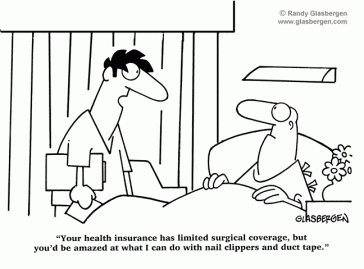
Understand the benefits and risks.
Daily aspirin therapy can be a lifesaving option, it may lower your risk of heart attack, but it's not for everyone. Get the facts before considering a daily aspirin.
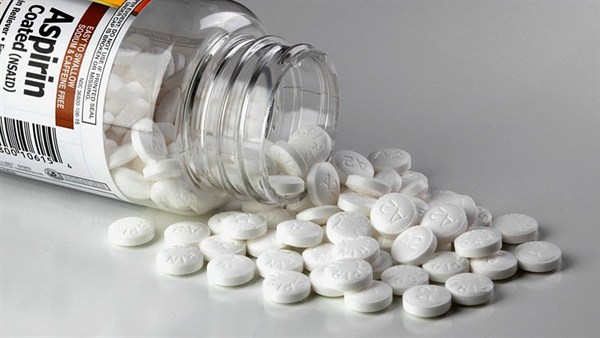
If you've had a heart attack or stroke, your doctor will likely recommend you take a daily aspirin unless you have a serious allergy or history of bleeding. If you have a high risk of having a first heart attack, your doctor will likely recommend aspirin after weighing the risks and benefits.
You shouldn't start daily aspirin therapy on your own, however. While taking an occasional aspirin or two is safe for most adults to use for headaches, body aches or fever, daily use of aspirin can have serious side effects, including internal bleeding.
How can aspirin prevent a heart attack?
Aspirin interferes with your blood's clotting action. When you bleed, your blood's clotting cells, called platelets, build up at the site of your wound. The platelets help form a plug that seals the opening in your blood vessel to stop bleeding, but this clotting can also happen within the vessels that supply your heart with blood. If your blood vessels are already narrowed from atherosclerosis, the build-up of fatty deposits in your arteries, a fatty deposit in your vessel lining can burst. If this happens, a blood clot can quickly form and block the artery which could prevent blood flow to the heart and cause a heart attack. Aspirin therapy reduces the clumping action of platelets — possibly preventing a heart attack.
Should you take a daily aspirin?
Talk with your doctor about whether daily aspirin therapy might help you prevent a heart attack. Your doctor may suggest daily aspirin therapy if:
-
You've already had a heart attack or stroke.
-
You haven't had a heart attack, but you have had a stent placed in a coronary artery, you have had coronary bypass surgery, or you have chest pain due to coronary artery disease (angina).
-
You've never had a heart attack, but you're at high risk of having one.
-
You have diabetes and at least one other heart disease risk factor — such as smoking or high blood pressure — and you're a man older than 50 or a woman older than 60. The use of aspirin to prevent heart attacks in people with diabetes but no other risk factor is controversial.
The U.S. Preventive Services Task Force recommends daily aspirin therapy if you're age 50 to 59, you're not at increased bleeding risk, and you have an increased risk of heart attack or stroke of 10 percent or greater over the next 10 years. If you're age 60 to 69, you aren't at increased bleeding risk, and you have a high risk of heart attack or stroke of 10 percent or greater over the next 10 years, talk to your doctor about daily aspirin therapy.
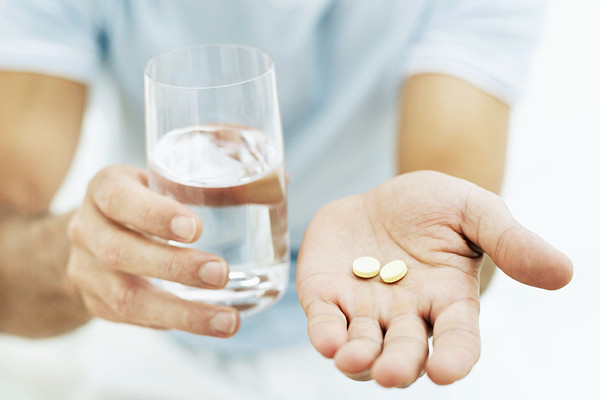
More research is needed to determine the benefits and risks of daily aspirin use in adults younger than age 50 and older than age 70 before a recommendation can be made for or against aspirin use to prevent cardiovascular disease and colorectal cancer for these age groups. Although aspirin has been recommended in the past for certain groups of people without a history of heart attack, there's some disagreement among experts about whether the benefits of aspirin outweigh its potential risks. The US Food and Drug Administration doesn't recommend aspirin therapy for the prevention of heart attacks in people who haven't already had a heart attack, stroke or another cardiovascular condition.
Guidelines are varied between organizations, but they're evolving as more research is done. The benefits of daily aspirin therapy don't outweigh the risk of bleeding in people with a low risk of heart attacks. The higher your risk of heart attack, the more likely it is that the benefits of daily aspirin outweigh the risk of bleeding. The bottom line is that before taking a daily aspirin you should have a discussion with your doctor.
Should you avoid daily aspirin therapy if you have another health condition?
Before starting daily aspirin therapy under the advice of your doctor, you should let him or her know if you have a health condition that could increase your risk of bleeding or other complications. These conditions include:
-
A bleeding or clotting disorder (bleeding easily)
-
Aspirin allergy, which can include asthma caused by aspirin
-
Bleeding stomach ulcers
What's the best dose of aspirin to take?
Your doctor will discuss what dose is right for you. Very low doses of aspirin, such as 75 to 150 milligrams (mg), but most commonly 81 mg, can be effective. Your doctor will usually prescribe a daily dose anywhere from 75 mg, the amount in an adult low-dose aspirin, to 325 mg (a regular strength tablet). If you have had a heart attack or have had a heart stent placed, it's very important to take aspirin and any other blood-thinning medications exactly as recommended.
What happens if you stop taking aspirin every day?
You might be surprised to learn that stopping daily aspirin therapy can have a rebound effect that may increase your risk of heart attack. If you have had a heart attack or a stent placed in one or more of your heart arteries, stopping daily aspirin therapy can lead to a life-threatening heart attack. If you have been taking daily aspirin therapy and want to stop, it's important to talk to your doctor before making any changes. Suddenly stopping daily aspirin therapy could have a rebound effect that may trigger a blood clot.
Can you take aspirin if you regularly take ibuprofen or another nonsteroidal anti-inflammatory drug (NSAID) for another condition?
Both aspirin and nonsteroidal anti-inflammatory medications (NSAIDs), such as ibuprofen (Motrin IB, Advil, others) and naproxen sodium (Aleve), reduce the clotting action of blood platelets. Regular use of nonsteroidal anti-inflammatory medications can increase your bleeding risk. Some NSAIDs can increase the risk of heart attacks on their own. Additionally, some NSAIDs can adversely interact with aspirin, increasing the risk of bleeding even more.
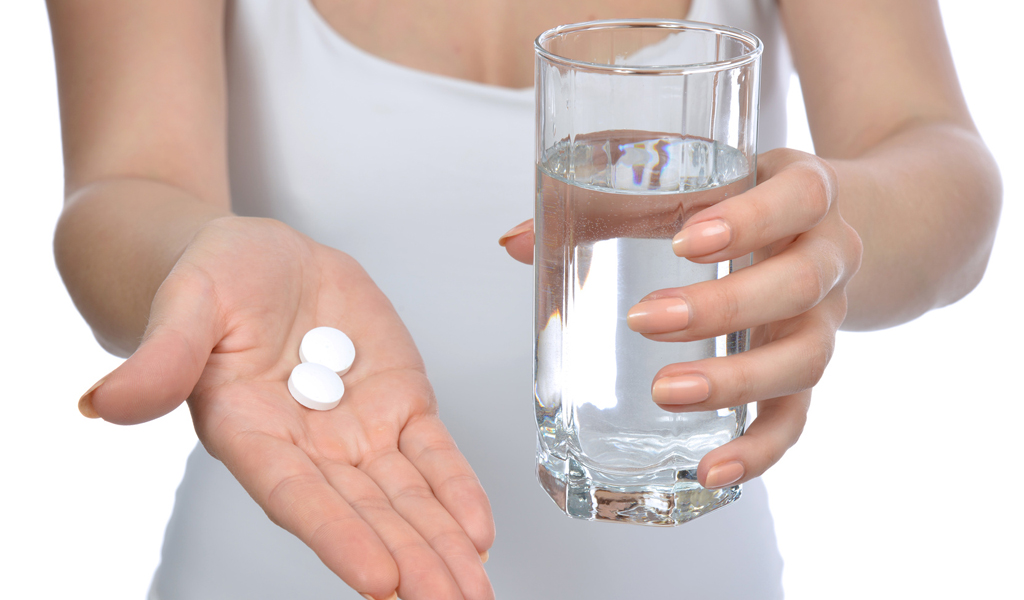
If you need only a single dose of ibuprofen, take it two hours after the aspirin. If you need to take ibuprofen or other NSAIDs more often, talk to your doctor about medication alternatives that won't interfere with daily aspirin therapy.
What are the possible side effects of daily aspirin therapy?
Side effects and complications of taking aspirin include:
-
Stroke caused by a burst blood vessel. While daily aspirin can help prevent a clot-related stroke, it may increase your risk of a bleeding stroke (hemorrhagic stroke).
-
Gastrointestinal bleeding. Daily aspirin use increases your risk of developing a stomach ulcer. And, if you have a bleeding ulcer or bleeding anywhere else in your gastrointestinal tract, taking aspirin will cause it to bleed more, perhaps to a life-threatening extent.
-
Allergic reaction. If you're allergic to aspirin, taking any amount of aspirin can trigger a serious allergic reaction.
If you're taking aspirin and need a surgical procedure or dental work, be sure to tell the surgeon or dentist that you take daily aspirin and how much, otherwise you risk excessive bleeding during surgery. Don't stop taking aspirin without talking to your doctor, however. People who regularly take aspirin and drink alcohol can have an increased risk of stomach bleeding. Talk to your doctor about how much alcohol is safe to drink. If you choose to drink alcohol, do so in moderation. For healthy adults, that means up to one drink a day for women of all ages and men older than age 65, and up to two drinks a day for men age 65 and younger.
What are possible drug interactions with daily aspirin therapy?
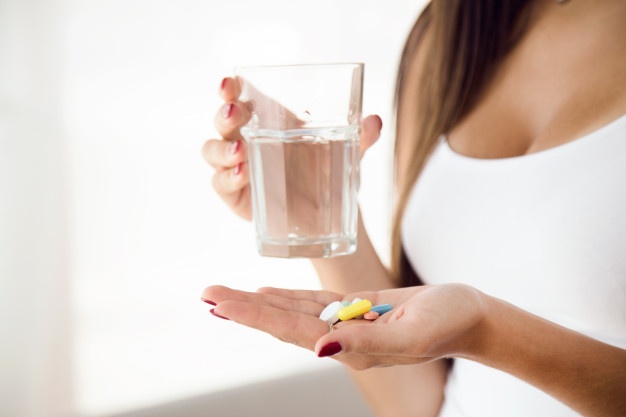
If you're already taking an anticoagulant, such as warfarin (Coumadin, Jantoven), apixaban (Eliquis), dabigatran (Pradaxa) or rivaroxaban (Xarelto) for another condition, combining it with aspirin may greatly increase the risk of major bleeding complications, however, there may be some conditions for which combining a low dose of aspirin with warfarin or another anticoagulant is appropriate. This therapy always needs to be carefully discussed with your doctor.
Other medications and herbal supplements also may increase your risk of bleeding. Medications that can interact with aspirin include:
-
Heparin
-
Ibuprofen (Advil, Motrin IB, others), when taken regularly
-
Corticosteroids
-
Clopidogrel (Plavix)
-
Some antidepressants (clomipramine, paroxetine, others)
Taking some dietary supplements can also increase your bleeding risk. These include:
-
Bilberry
-
Capsaicin
-
Cat's claw
-
Danshen
-
Evening primrose oil
-
Ginkgo
-
Kava
-
Ma-Huang
-
Omega-3 fatty acids (fish oil)
If you take daily aspirin, is it still safe to take an aspirin during a heart attack?
If you think you're having a heart attack, the most important thing for you to do is call 000 or emergency medical services. Don't delay calling for help. Aspirin alone won't save your life if you're having a heart attack. The operator may advise you to chew an aspirin, but will first ask questions to make sure you're not allergic to aspirin or you don't have any other health conditions that would make taking an aspirin during a heart attack too risky. It's OK to chew an aspirin if your doctor has previously told you to do so if you think you're having a heart attack — but call 000 or emergency medical services first.
Should you take a coated aspirin?
Enteric-coated aspirin is designed to pass through your stomach and not disintegrate until it reaches your small intestine. It may be gentler on the stomach and may be appropriate for some people who take a daily aspirin, especially in those with a history of gastritis or ulcers, however, some researchers think there's no evidence that taking an enteric-coated aspirin decreases your chance of developing gastrointestinal bleeding. In addition, some research has found that coated aspirin may not be as effective as plain aspirin when taken at the time of a possible heart attack. Talk to your doctor if you're concerned about ways to decrease your bleeding risk.

Butter V’s Margarine – again!!
When you are in the dairy aisle in the supermarket, how often do you see a butter product being marketed as healthy? Almost never. It’s always the margarine alternative that boasts of health benefits, but in reality, it’s the other way around. Real authentic butter is the one that’s better for your health. Why? Read on to find out.
Butter is the real thing.
Big brand butter contains two natural ingredients, cream and salt. Even if you choose a cheaper store brand, the ingredient list is just as short, unless, of course, you opt for unsalted, in which case you’re looking at a single ingredient!
Margarine is a totally different story. The substance that creates margarine is nothing more than a scientific process, an experiment really, which created something that has proven to be incredibly bad for our bodies - trans fats. Just look at the laundry list of ingredients:
Vegetable oils, water, phytosterol esters, salt, milk solids, emulsifiers, preservative, food acid, natural flavours, vitamin A and D, natural colour.
Margarine was created as a cheaper alternative to butter back in the late 1800s, when the French emperor Napoleon challenged the people to make a butter-like product for the military and lower-class citizens. It started being mass produced in 1903 when it was found that adding hydrogen to vegetable oil turns it into a more solid, spreadable product. Margarine was much cheaper to produce than butter and so it became very popular.
Good vs Bad Fats.
Fatty acids like omega 3 and 6 are really important for our brain function. Vitamins A, D and E and all fat-soluble vitamins help transport fat around the body, so natural fats are good. Real butter contains all of them!
Trans fats act differently, their molecular structure is different, and so they provide no help to the body in the way natural fats do. In recent years, studies have shown that trans fats can have really bad effects on our health.
-
One study (Dalainas & Ioannou, 2008) showed a 23% increase in coronary artery disease in just a 2% increase in energy taken from trans fats.
-
Another one in 2012 also found that trans fats increase your risk of heart disease.
-
Yet another discovered that even the negligible amount in some foods can increase your dementia risk. That last one came after the artificial trans fat ban that took place in the US last year. Even though it’s officially been banned (at least when artificially created), trans fats still find their way into foods and still cause health problems.
Why butter is good for you.
Butter is full of immune-boosting vitamins. It contains Lauric Acid (also found in breast milk and coconut oil). Real butter is a great source of healthy cholesterol, fatty acids, antioxidants, and also helps with nutrient absorption. It also contains a Lot of Healthy Saturated Fats. The “war” against saturated fat was based on bad science. It was never really proven that it caused any harm, in fact, recent studies are suggesting more and more that there is no association at all between saturated fat and cardiovascular disease. The fat found in simple carbohydrates like bread and sugar is actually (according to recent research) what is to blame for heart disease.
What if your doctor still recommends margarine instead of butter?
This is where things get tricky, because many doctors still recommend margarine over butter for patients with heart disease. Here’s the thing, though, when they make that recommendation, they’re thinking about newer margarine products that are made without trans fat, mostly by swapping the hydrogenated oil to water or regular liquid vegetable oil. Sure, that’s better than the earlier versions, but it’s still the equivalent of a science project versus real, natural food.
Plus, it doesn’t taste nearly as rich and the newer studies are showing no association with heart disease. While never recommending ignoring your doctor’s recommendation, it’s worth asking him if margarine is still the best option in that case, or if it would perhaps be smarter to just use a little butter instead.
Margarine will never be as natural as butter.
No matter how healthy margarine manufacturers try to make their product, they’ll never come close to matching the sheer naturalness and wholesomeness of good, real butter, in fact, the harder they try, the longer their ingredients list becomes! Unless your doctor absolutely forbids you from eating butter, the real deal is always the best choice. If you truly are unable to eat it, you’re better off finding a different way to flavour your food than turning to a processed product like margarine.
Butter is a completely natural food essential to your health. Make sure you buy an organic butter from grass-fed cows.
Good natural fats are good for you. Having higher levels of cholesterol is also no longer thought to be as bad for you, and slightly higher levels of cholesterol in women have been actually linked to a longer life. So, the next time you think you are doing your body good by choosing a low fat butter alternative, think again and go for the real thing instead.
Wellness Claim #8: You have to keep a water bottle handy all the time.
The best way to treat your body like a temple, banish fatigue, ace your workout, and end headaches for good is to keep it well watered, some wellness influencers claim. Preferably from a trendy water bottle that you sip from every few minutes.
The truth: “Hydration is important, but it’s been made far more complicated than it needs to be,” says Douglas Casa, Ph.D., a sweat and hydration researcher at the University of Connecticut. The vast majority of healthy people adequately meet their daily hydration needs by letting thirst be their guide - which means drink when you’re thirsty and stop when you aren’t.
Here’s a bunch of overhyped Wellness Promises that are myths.
-
Pink Himalayan salt isn’t more “nutritious” than regular table salt. While it may contain higher trace amounts of some minerals, the amounts are insignificant and afford no additional health benefits.
-
Lectins are not bad for you. This family of protein compounds found in beans and other plants do not make those plants bad for you.
-
Probiotics probably can’t boost your mood, your immune system, or your overall wellness. They might help with irritable bowel syndrome, though.
-
Kombucha isn't making you any healthier. Yes, it has some buzzy-sounding probiotics in it, but they’re not doing anything for you.
-
“Natural sugars” like agave syrup and coconut sugar aren’t any better for you than the refined white stuff. All sweeteners are basically the same in terms of calories and nutrients.
-
Antiperspirant does not cause breast cancer. The active ingredient, aluminium, can stain your clothes, though.
-
"Alkalizing" your body with alkaline water (or anything else) is not a thing. You can’t change your body’s pH through what you eat, nor would you want to.
-
Apple cider vinegar is good for salads. Not for treating your acid reflux or curing your acne.
-
You don’t need to detox with a juice cleanse. Your body has a built in detoxification system in the form of your liver and kidneys.
-
Activated charcoal is only helpful if you’re in the ER and need your stomach pumped. It’s not a detox for your skin or your digestive system.
-
Charcoal toothpaste doesn’t strengthen your teeth. And it might wear away your enamel.
-
The ketogenic diet isn’t a magical weight-loss trick. It works like every other diet by putting you in a caloric deficit, but it could also lead to nutritional deficiencies.
-
Lemon water will not boost your metabolism. It won’t detox your body either, but the acid content can eat away at your tooth enamel.
-
Dark chocolate is probably not better for you than other sweets. Studies that have found a connection between chocolate consumption and better health merely show that there’s an association; they don’t prove that chocolate is the reason.
-
Gluten is perfectly fine for the vast majority of people. The only legitimate reasons to cut it out of your diet are if you have celiac disease or you experience stomach pain, vomiting, or diarrhea after eating it.

The biggest lies the food industry tells consumers.
Calories in a Serving.
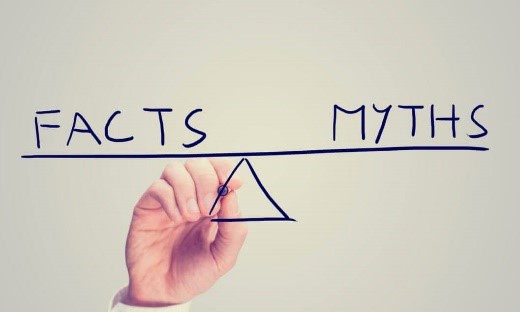
The food industry hides the real calorie and sugar content its products contain by telling consumers the product has more than one serving. For instance, it might state a chocolate bar or soda bottle contains two servings. The majority of people don’t stop when they finish half a drink or candy bar; they finish the entire thing. The food industry uses this to their advantage and state there are only a certain number of calories in each serving.
Consumers need to be careful when reading labels and check the number of servings in the products. This means if the product is two servings, and each one is 200 calories, the entire product contains 400 calories. For instance, if you have a 1 litre bottle of soft drink that says it contains 100 calories and 27 grams of sugar for every serving, that means the entire bottle contains 300 calories and 81 grams of sugar. The majority of people would have no problem drinking an entire 1 litre bottle of soft drink in one sitting.
Bottom Line: Be sure you check the number of servings on the label. You also want to multiply the sugar and calorie content by the number of servings to determine the total amount in the container. When keeping track of food intake, an app like Noom with an extensive food database managed by nutritionists is the best way to ensure your serving sizes are where they need to be.
Another good site is FoodSwitch which is maintained by Bupa. Download the App on your phone, you can then scan everything you buy and it will tell you the ingreients.
Trans Fat.
Currently, in Australia there is no requirement for the label on a food product to list trans fat in the nutrition information panel. The exceptions to this are if a nutrition claim made on the product about other fats (such as omega-3 or cholesterol or monounsaturated fat).Always check the list of ingredients—if you see partially hydrogenated oil anywhere on the label, the product contains trans fats. Even if a processed food is free of trans fats, it may contain other potentially harmful ingredients such as vegetable oils and soybean oil.
Bottom Line: Avoid foods that have partially hydrogenated oil or other types of high-Omega-6 vegetable oil in the list of ingredients.
Ingredients.

Many people experience adverse reactions to some of the ingredients in certain foods and choose to avoid them. The problem is the food manufacturers often take steps to hide those controversial ingredients by referring to them by technical names that most people do not recognize. For instance, European labels may call MSG (monosodium glutamate) E621 while Carrageenan may be referred to as E407. The same may be true of many types of sugar. For example, “evaporated cane juice” is nothing but sugar.
Bottom Line: The food industry has a tendency to hide controversial ingredients by calling them by another name.
Processed Foods.
The flavour in many processed foods sounds natural. One example is Orange-flavoured vitamin water that tastes like oranges. Except for one thing: it doesn’t contain any actual oranges. The sweet taste comes from a combination of sugar while the orange flavour is the result of highly refined chemicals that fool the taste sensors in the mouth into thinking it is oranges. Keep in mind just because a product tastes like real food doesn’t mean there is any in there. Blueberry, orange, strawberry, and others are quite often just chemicals that have been refined to taste like the natural product.
Bottom Line: Even though a product has the taste of natural food doesn’t mean the product contains any of the natural product.
Eating processed food makes it harder to burn calories.
Studies have shown that when you eat a diet high in processed foods, your body will find it harder to burn fewer calories. This is because the calories from processed foods are not easy to burn due to all the chemical additives, extra refined sugar, and salt that they contain. Whole foods are amazing for overall health and wellness. Switch out those processed foods for more natural varieties, track with an app like Noom, and see just how nutritious real foods can be.
Gluten Free.
Eating a diet free of gluten is quite popular today. According to HarvardHealth, one report, nearly a third of all Americans are either consuming foods free of gluten or are attempting to restrict their intake of gluten. Products that are labeled as being “gluten-free” in order to replace foods that are gluten are not healthy. In most cases, these foods are made from high glycemic starches that are highly refined such as tapioca starch, corn starch, and potato starch. They may also be packed full of sugar. The concept behind eating gluten-free should involve getting rid of the bread and other unhealthy foods and replacing them with real foods.
Bottom Line: Products labelled as “gluten-free” often contain a variety of unhealthy ingredients. Avoid those products and eat real food instead. Many gluten-free products are not healthy because they frequently include sugar, tapioca starch, gums (stabilizers like guar gum, carrageenan gum, etc.) all of which affect enzyme production and cause digestive issues including bloating, gas, constipation and/or diarrhoea.
Low-Fat or Fat-Free.
The “war” on fat resulted in an enormous amount of processed foods being marketed as low-fat or no-fat. You will find labels on these products that say “low-fat,” “reduced fat,” or “fat-free.” These products with the fat removed or reduced are unhealthy. Foods without fat lack flavour and are not appealing to the taste buds. To compensate for the lack of taste, these foods usually include an abundance of sugar, artificial sweeteners, or other unhealthy ingredients. Added sugars are much worse than fat, but, too much saturated fat can still contribute to health risks if eaten in excess.
Bottom Line: Any product that includes the words “low-fat” or any similar terminology on the label is more than likely unhealthy.

Sugar.
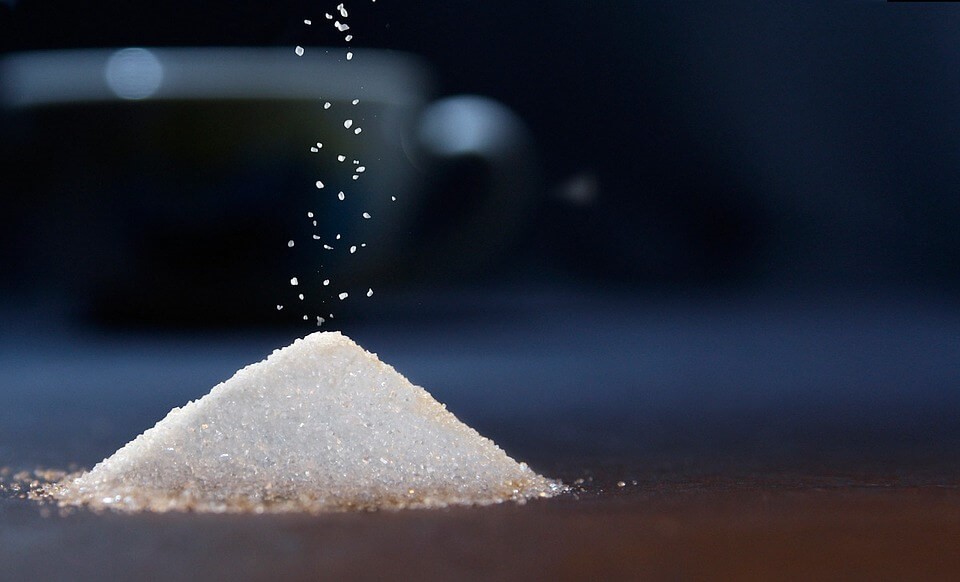
Most people don’t bother reading the list of ingredients before they make a purchase. Even those who do read the labels can be fooled by the ways food manufacturers disguise the true ingredients in the foods. Ingredients are listed according to its placement in the product. In other words, the first one listed is the one that is used the most, the second ingredient listed is the second in frequency and so on. If sugar appears early in the list, the product is loaded with sugar. The problem is food manufacturers use a variety of names for sugar in the products. Some may contain “sugar,” “high fructose corn syrup,” and “evaporated cane juice.” All of these are just different names for ordinary sugar. This allows them to include some healthier-sounding ingredient as the first one on the list, however, if you were to add all the amounts for the different types of sugar, you would find sugar would be right at the top.
Bottom Line: Read the label and make sure to verify whether a product contains more than one type of sugar. If that is the case, the sugar may be one of the top ingredients. The goal is a simple snack, made from ingredients you can pronounce, with no artificial sweeteners, that supports your overall health, and is relatively mild in flavour. If you recognize all the ingredients, you are on the right track!
Low-Carb Foods.
The food industry tell you the benefits of a low carb diet so food manufacturers got wind of the trend and begun offering a variety of low-carb food products. The problem with these types of foods just like the low-fat food is not all of them are healthy. These junk foods are usually processed and contain unhealthy ingredients.
Bottom Line: Low-carb products are not always healthy and are often highly processed.
Whole Grains.
The food industry tells you that whole grains are one of the healthiest foods and even though whole grains are healthier than refined grains, there is no evidence to support the premise that eating whole grains is better than not eating any grains at all. Processed food products such as cereals often state they contain whole grains, what the food industry doesn’t tell you is that the grains in the products are not always whole but have been crushed into a very fine flour. While a product may contain small amounts of whole grains, it probably also contains many other harmful ingredients such as sugar and its liquid counterpart, high fructose corn syrup.
Back Go to page: 1 2 3 4 5 6 7 8 9 10 11 12 13 14 15 16 17 18 19 20 Forward